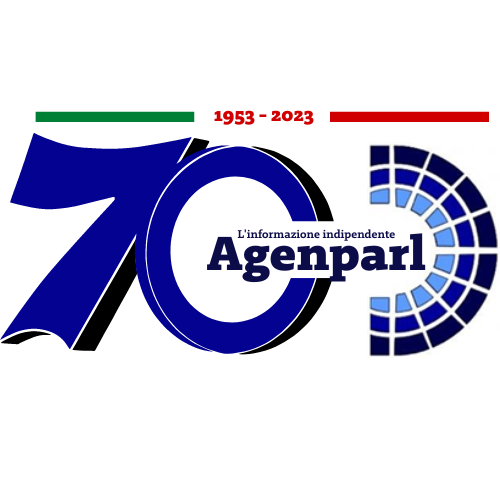 (AGENPARL) - Roma, 25 Luglio 2025
(AGENPARL) - Roma, 25 Luglio 2025(AGENPARL) – Fri 25 July 2025 A weekly compendium of media reports on science and technology achievements
at Lawrence Livermore National Laboratory. Though the Laboratory reviews
items for overall accuracy, the reporting organizations are responsible for
the content in the links below.
LLNL Report, July 25, 2025
LLNL’s Nate Gleason testifies before the Subcommittee on Cybersecurity and
Infrastructure Protection on July 22. (Photo: Committee on Homeland Security)
Cyber expert takes the stand
https://www.theregister.com/2025/07/22/lapsed_cisa_funding_cybersentry/
Nate Gleason leads a team at Lawrence Livermore National Laboratory (LLNL)
focused on nation-state threats against critical infrastructure, and this
includes the CyberSentry Program.
It’s a public-private partnership, managed by the Cybersecurity and
Infrastructure Security Agency (CISA), that looks for malicious activity on
IT and operational technology (OT) networks in America’s energy, water,
healthcare and other critical facilities. This includes threats along the
lines of China’s Volt Typhoon and Salt Typhoon intrusions — network
activity that may look like, or even start as, espionage, but ultimately
enables the digital invaders to backdoor critical orgs and deploy cyber
weapons to aid in a kinetic war.
Participating critical infrastructure owners and operators agree to place
sensors on their networks, and LLNL engineers monitor that data in real time.
CISA then uses this information to create alerts for the broader U.S.
critical infrastructure sector.
“We’re looking for threats that haven’t been seen before. We’re looking for
threats that exist right now, in our infrastructure,” Gleason told Congress
during a House subcommittee hearing.
Read More
https://www.theregister.com/2025/07/22/lapsed_cisa_funding_cybersentry/
Reactive carbon dioxide capture and conversion could be used to produce
synthetic renewable natural gas — energy storage that can be leveraged with
existing infrastructure. (Image: Alvina Aui)
Energy for the long term
https://www.independentnews.com/news/livermore_news/synthetic-natural-gas-could-provide-lower-cost-energy/article_5201aaf5-7f95-44cf-9bb1-a808b7840ed7.html
Synthetic renewable natural gas (SRNG) may become a cost-effective option to
store clean energy for the power grid in the U.S., if produced using a method
analyzed in a new study from Lawrence Livermore National Laboratory (LLNL).
The gas — produced using carbon dioxide pulled from sources such as the
air, flue gas or industrial-waste streams — adds no new carbon to the
atmosphere when burned and can replace fossil natural gas in applications
such as power generation. If produced using renewable energy sources, SRNG
can also store renewable energy for long durations until needed.
Traditional SRNG production methods use significant energy purifying the
captured carbon dioxide, so far rendering it cost-prohibitive in the United
States.
In a paper published last month in the journal Cell Reports Sustainability,
an LLNL team concluded that SRNG produced through an underutilized process
known as reactive carbon capture could make it a cost-competitive option for
long-term energy storage.
Read More
https://www.independentnews.com/news/livermore_news/synthetic-natural-gas-could-provide-lower-cost-energy/article_5201aaf5-7f95-44cf-9bb1-a808b7840ed7.html
On Sept. 11, 2001, the collapse of the World Trade Center in New York City
released a toxic plume, as seen in this photo taken from aboard the
International Space Station. (Image: NASA)
Predicting poisonous plumes
https://phys.org/news/2025-07-deep-toxic-plume-movement-urban.html
In 2023, a train carrying hazardous materials derailed in East Palestine,
Ohio. In 2025, a series of destructive wildfires ravaged Los Angeles. In both
cases, a toxic plume — a cloud of harmful airborne materials that disperse
over time and space due to wind and turbulence — was released.
Toxic plumes from industrial accidents, chemical spills and structural fires
can pose immediate and serious health and environmental risks, particularly
in densely populated urban areas. Existing computer models to predict how
plumes travel can take hours to run, leaving emergency responders without
fast and reliable predictions and hindering evacuation planning and
early-warning systems.
In a study published in PNAS Nexus, researchers from Lawrence Livermore
National Laboratory (LLNL) described a new deep learning model, called
ST-GasNet, capable of predicting toxic plume behavior in just a few minutes.
ST-GasNet is trained with the data from traditional computational fluid
dynamics simulations, which capture the complex wind structures and plume
movement around buildings, streets and structures in urban areas.
Read More https://phys.org/news/2025-07-deep-toxic-plume-movement-urban.html
LLNL robotics and materials engineering intern Andre Fatehi monitors the APEX
platform during an experimental test run. (Photo: Garry McLeod/LLNL)
Alloys at the APEX
The development of new metal alloys is complex and time-consuming. At
Lawrence Livermore National Laboratory (LLNL), an interdisciplinary team is
working together with Cornell University on an automated solution: APEX —
short for Autonomous Alloy Prediction and EXperimentation. The goal is to
create a fully automated research platform for 3D-printed metal samples that
independently designs, manufactures, and analyzes new alloys.
The background lies in the enormous number of possible material combinations
involved in alloy development.. Even with just a few elements, the parameter
space grows exponentially.
“Our end goal is to make APEX the first self-driving laboratory for alloy
discovery at LLNL, capable of working around the clock to collect
experimental data and autonomously design, build and test novel alloys,”
said Mason Sage, APEX principal investigator and LLNL robotics engineer.
The system combines automated sample production using Directed Energy
Deposition — a type of additive manufacturing where metal powder is locally
melted by a laser — with precise post-processing.
Read More
A representation of the interactions between another cancer drug candidate,
BBO-8520 (yellow), the natural substrate guanosine triphosphate (GTP, orange)
and a KRAS protein (cyan). Mutations in the latter are linked to about 30% of
all cancers.
A targeted strike on cancer
Researchers at Lawrence Livermore National Laboratory (LLNL) and two partner
institutions have developed a compound shown in clinical trials to block
tumor growth without a common debilitating side effect from similar cancer
treatments.
LLNL said the compound, known as BBO-10203, has shown promise in blocking a
key interaction between mutated proteins, or oncoproteins, that drive the
growth of cancerous tumors without resulting in high blood-sugar levels in
patients.
High blood sugar, or hyperglycemia, can result in heart and blood vessel
disease, poor kidney function and nerve damage, among other complications.
“This is a precise, targeted strike on a long-standing cancer
vulnerability,” said Felice Lightstone, co-author of the study and leader
of the LLNL Biochemical and Biophysical Systems Group.
LLNL said the clinical results, published in the journal Science, “offer a
potential breakthrough for patients with aggressive, treatment-resistant
cancers,” including breast, lung and colorectal cancer.
Read More
——————————————————————————
Founded in 1952, Lawrence Livermore National Laboratory https://www.llnl.gov
provides solutions to our nation’s most important national security
challenges through innovative science, engineering and technology. Lawrence
Livermore National Laboratory is managed by Lawrence Livermore National
Security, LLC for the U..S. Department of Energy’s National Nuclear Security
Administration.
Read previous Lab Report articles online https://www.llnl.gov/news/lab-report
Unsubscribe from this newsletter
